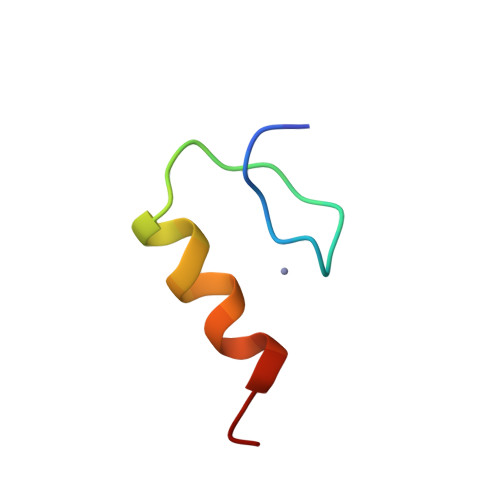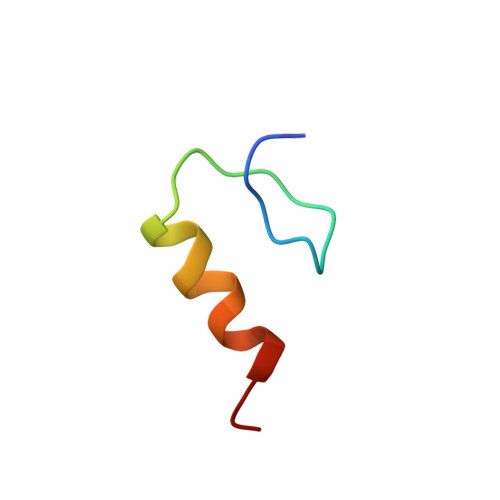Structures of zinc finger domains from transcription factor Sp1. Insights into sequence-specific protein-DNA recognition.
Narayan, V.A., Kriwacki, R.W., Caradonna, J.P.(1997) J Biological Chem 272: 7801-7809
- PubMed: 9065444
- DOI: https://doi.org/10.1074/jbc.272.12.7801
- Primary Citation of Related Structures:
1SP1, 1SP2 - PubMed Abstract:
The carboxyl terminus of transcription factor Sp1 contains three contiguous Cys2-His2 zinc finger domains with the consensus sequence Cys-X2-4-Cys-X12-His-X3-His. We have used standard homonuclear two-dimensional NMR techniques to solve the solution structures of synthetic peptides corresponding to the last two zinc finger domains (Sp1f2 and Sp1f3, respectively) of Sp1. Our studies indicate a classical Cys2-His2 type fold for both the domains differing from each other primarily in the conformation of Cys-X2-Cys (beta-type I turn) and Cys-X4-Cys (beta-type II turn) elements. There are, however, no significant differences in the metal binding properties between the Cys-X4-Cys (Sp1f2) and Cys-X2-Cys (Sp1f3) subclasses of zinc fingers. The free solution structures of Sp1f2 and Sp1f3 are very similar to those of the analogous fingers of Zif268 bound to DNA. There is NMR spectral evidence suggesting that the Arg-Asp buttressing interaction observed in the Zif-268.DNA complex is also preserved in unbound Sp1f2 and Sp1f3. Modeling Sp1-DNA complex by overlaying the Sp1f2 and Sp1f3 structures on Zif268 fingers 1 and 2, respectively, predicts the role of key amino acid residues, the interference/protection data, and supports the model of Sp1-DNA interaction proposed earlier.
Organizational Affiliation:
Department of Chemistry, Yale University, New Haven, Connecticut 06520-8107, USA.



















